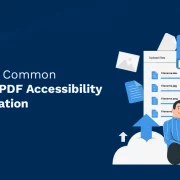
5 Steps to Create a Collaborative Learning Environment at the Workplace
Collaborative learning at the workplace is an effective educational technique for upskilling employees. Implementing collaborative learning strategies can help you boost productivity, understanding, and higher-level thinking in your employees.
This blog explores more about collaborative learning and strategies to create a collaborative learning environment at the workplace. What is collaborative learning? Collaborative learning is a powerful educational approach for workplaces that uses dedicated groups to support learning through working on projects together.
In a collaborative learning approach, small groups of three or more learners work and interact to either solve problems or complete tasks given to them by facilitators. In this learning process, the learners are actively encouraged to use critical thinking and decision-making skills to solve problems instead of the traditional style of memorizing facts. Here are some of the benefits of collaborative learning –
Improves retention
One of the key advantages of the collaborative learning approach is that it helps retain information. The approach promotes high-level thinking and helps employees retain that information more as compared to individual learning situations.
Develops skills and knowledge
Working in a group allows learners to achieve a common goal and helps develop various skill sets and knowledge. They get to learn from fellow employees and gain experience and new perspectives, which helps them understand the work situations better by developing skills such as critical thinking, presenting, self-management, and defending an idea.
Helps to improve engagement
Giving your employees a chance to learn new skills helps develop higher job satisfaction, enhancing overall productivity and engagement.
Improves relationships
In a typical workplace, individuals usually cannot foster better relationships by working alone. Working collaboratively in teams encourages learners to work together and develop better connections and relationships with each other. How to create a collaborative learning environment at the workplace?
Adopt decentralized learning
The concept of centralized learning involves information flowing from instructors to employees. However, to build a collaborative learning environment, businesses need to shift towards a more decentralized approach.
Since an increasing number of employees today are working remotely and asynchronously, companies need to break learning into small chunk-sized modules so that employees can better manage and fit learning into their day-to-day work schedules.
Some of the ways to do this include-
- Making a shift to online classes that can be easily completed in micro-sessions as per employees’ schedules
- Adopting a bottom-up approach where each team member participates in the learning process, identifies their specific learning needs, offers feedback on existing courses, requests relevant courses based on their job roles/requirements, and creates courses themselves
This kind of decentralized learning approach helps to democratize knowledge, thus allowing employees to share information. Further, this approach is more sustainable, agile, and adaptable than traditional centralized learning systems.
Actively promote knowledge sharing
By promoting knowledge sharing within your organization, you can utilize your employees’ individual skills and expertise to help your organizations succeed overall.
In a collaborative learning environment, employees are encouraged to learn about each others’ roles and gain deeper insights into other departments to remain aligned on organizational goals and promote collaboration across teams.
Further, the collaborative learning approach allows employees to become more invested in the company as a whole. Being part of the larger learning community and sharing knowledge also leads to much higher employee satisfaction.
Put more emphasis on self-directed learning
Encouraging self-directed learning allows you to support your employees’ growth and, in turn, maximize the benefits for your organization as a whole. It also gives your teams more flexibility and autonomy as they can conveniently complete required courses on their own schedule and systematically work towards their targets independently.
In self-directed learning, employees also get the freedom and flexibility to fit relevant courses around their work because they’re empowered to manage their own responsibilities.
Pick the right learning tools
Picking up the right tools is one of the most crucial requirements for creating an effective collaborative learning environment at the workplace. There are several online software that you can use to enable collaboration among employees.
Powerful cloud-based collaboration technology allows organizations to access data from almost any location to ensure that people can connect on a common platform. Teams can conveniently communicate in real-time, share files, and have an interactive experience.
Create a strong sense of community among teams
Building a strong sense of community is important to create a collaborative workspace where the learners/employees feel secure, supported, and nurtured.
If you want your teams to be more committed and have a global perspective, make them feel comfortable, develop a sense of community among them and share the right knowledge to assist them in solving issues with the help of each other.
Further, allow situations within the teams or groups to change without impacting the end goal or interaction. The idea here is to foster an environment where employees work to resolve issues within the group. And to do this, you need to encourage self-support and various stress-reducing strategies to ensure that the group continues with the task. To conclude Apart from the strategies mentioned above, collaborative learning in the workplace can also occur through various scenarios, including presentations, online discussions, etc. Implementing these tips will help you build powerful teams and empower them to reach their true business potential.
Need to know more about our Products & Services? Drop us a note at marketing@hurix.com.







